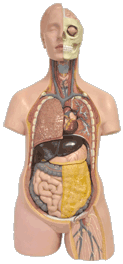At TheHealthBoard, we're committed to delivering accurate, trustworthy information. Our expert-authored content is rigorously fact-checked and sourced from credible authorities. Discover how we uphold the highest standards in providing you with reliable knowledge.
What Are the Different Types of Levers in the Human Body?
In studying human physiology, three different types of levers exist, called first class, second class or third class levers. The body does not have very many first class levers, but it does have several second class types. The most commonly occurring of all of the levers in the human body are those identified as class three levers.
Understanding human biology and how each of the different levers operates is important, as such information has proven to be useful in identifying malformations and those levers which do not function properly. Among professionals who must have in-depth knowledge of human anatomy and, in particular, how levers work are doctors and physical therapists who often work to repair damaged levers in the human body. Coaches and athletes also study human body systems to understand how the human body performs in an effort to avoid future injuries.

A lever can be defined as a part of the body that pivots around a certain point to enable that part of the body to rotate and move most effectively. One example of different types of levers in the human body are those that support a heavy weight, such as the head. In this form, identified as a first class or type, the lever’s axis is located between its point of resistance and its force. It is also closest to its natural point of resistance.
The second of the three types of levers in the human body is characterized as resistance that is located between the axis and a point of force. One such example of this type includes the ball of the foot, which helps lift the body to enable activities such as running or walking. With this type of lever, a large weight can be moved with the application of very little force.
Class three levers in the human body occur far more frequently than any other type. An example of this kind would be an arm, which uses the elbow as a pivoting point. These levers are those where the force needed for output is farther away from the pivot than that used for input. Individuals who study human morphology have discovered that class three levers are the most useful for increasing the speed involved in using various class three body parts.
AS FEATURED ON:
AS FEATURED ON:










Discuss this Article
Post your comments